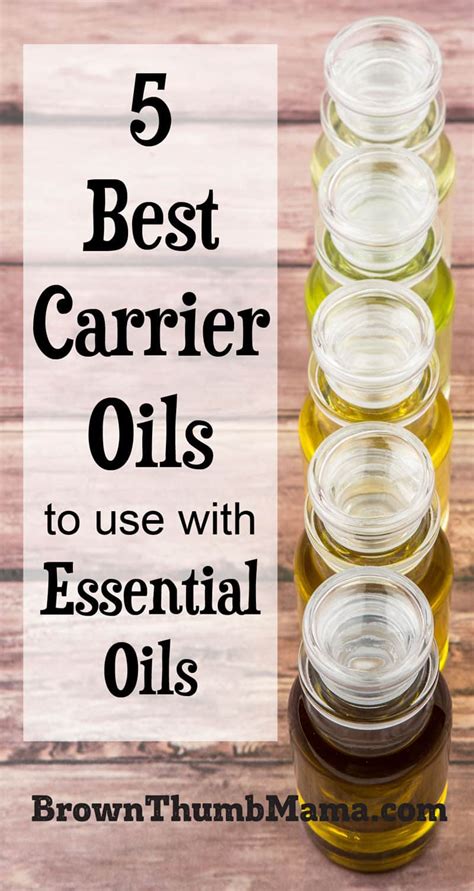Carrier oils, also known as base oils or vegetable oils, are used to dilute essential oils for topical application. Essential oils are highly concentrated plant extracts that can cause skin irritation or allergic reactions when applied directly to the skin. Carrier oils help to disperse the essential oils, making them safe for use on the skin.

Properties of Carrier Oils
Carrier oils vary in their properties, including:
- Viscosity: The thickness or thinness of the oil.
- Absorption rate: How quickly the oil penetrates the skin.
- Comedogenicity: The tendency of the oil to clog pores.
- Nutrient content: The presence of beneficial vitamins, minerals, and antioxidants.
Choosing the Right Carrier Oil
The best carrier oil for you will depend on your skin type and the essential oils you are using. Some common carrier oils include:
| Carrier Oil | Viscosity | Absorption Rate | Comedogenicity | Nutrient Content |
|---|---|---|---|---|
| Jojoba oil | Medium | Medium | Non-comedogenic | Rich in vitamins A, E, and D |
| Coconut oil | Solid at room temperature | Slow | Non-comedogenic | Rich in saturated fats and lauric acid |
| Almond oil | Light | Medium | Non-comedogenic | Rich in vitamin E |
| Argan oil | Medium | Slow | Non-comedogenic | Rich in vitamin E and antioxidants |
| Grapeseed oil | Light | Fast | Non-comedogenic | Rich in antioxidants |
Benefits of Using Carrier Oils
Using carrier oils with essential oils offers several benefits, including:
- Diluting the essential oil: Carrier oils help to reduce the concentration of essential oils, making them safe for topical application.
- Improving absorption: Carrier oils enhance the absorption of essential oils into the skin, increasing their therapeutic effects.
- Nourishing the skin: They can moisturize, soften, and protect the skin.
- Reducing irritation: Carrier oils can reduce the risk of skin irritation or allergic reactions caused by essential oils.
How to Use Carrier Oils
To use carrier oils with essential oils, follow these steps:
- Choose a carrier oil. Select a carrier oil that is appropriate for your skin type and the essential oils you are using.
- Dilute the essential oil. Add a few drops of essential oil to the carrier oil. The recommended dilution ratio varies depending on the essential oil and the desired therapeutic effect.
- Apply the mixture to the skin. Massage the diluted essential oil blend into the desired area of the skin.
- Wash your hands. After applying the essential oil blend, wash your hands thoroughly to prevent skin irritation.
Applications of Carrier Oils
Carrier oils are used in a wide range of applications, including:
- Aromatherapy: Blending essential oils with carrier oils for inhalation or topical application.
- Massage: Using carrier oils as a massage medium to enhance relaxation and therapeutic benefits.
- Skincare: Incorporating carrier oils into skincare products to moisturize, nourish, and protect the skin.
- Haircare: Using carrier oils as a hair treatment to improve hair health, shine, and growth.
Conclusion
Carrier oils are essential for diluting essential oils for topical application. They provide numerous benefits, including diluting the essential oil, improving absorption, nourishing the skin, and reducing irritation. By choosing the right carrier oil and diluting the essential oil properly, you can safely experience the therapeutic benefits of essential oils while minimizing the risk of skin reactions.
